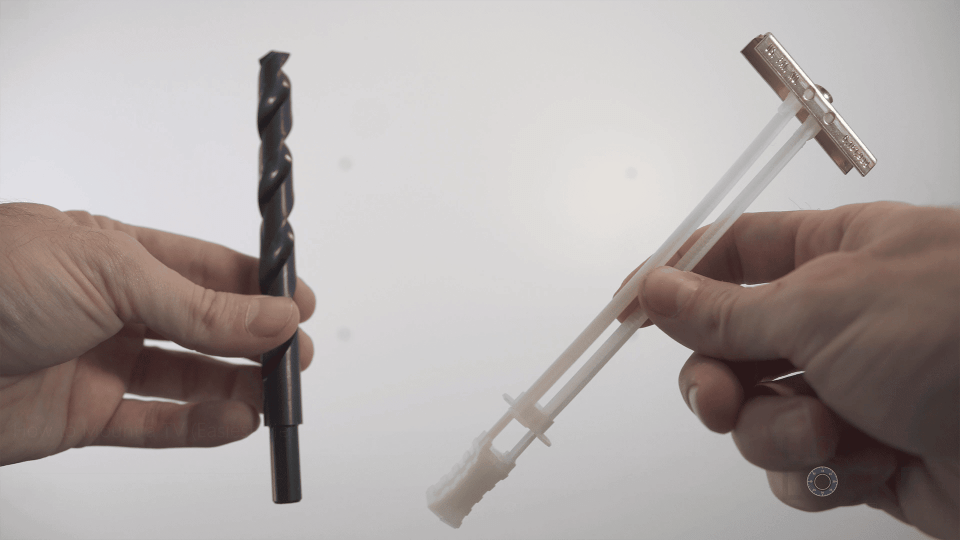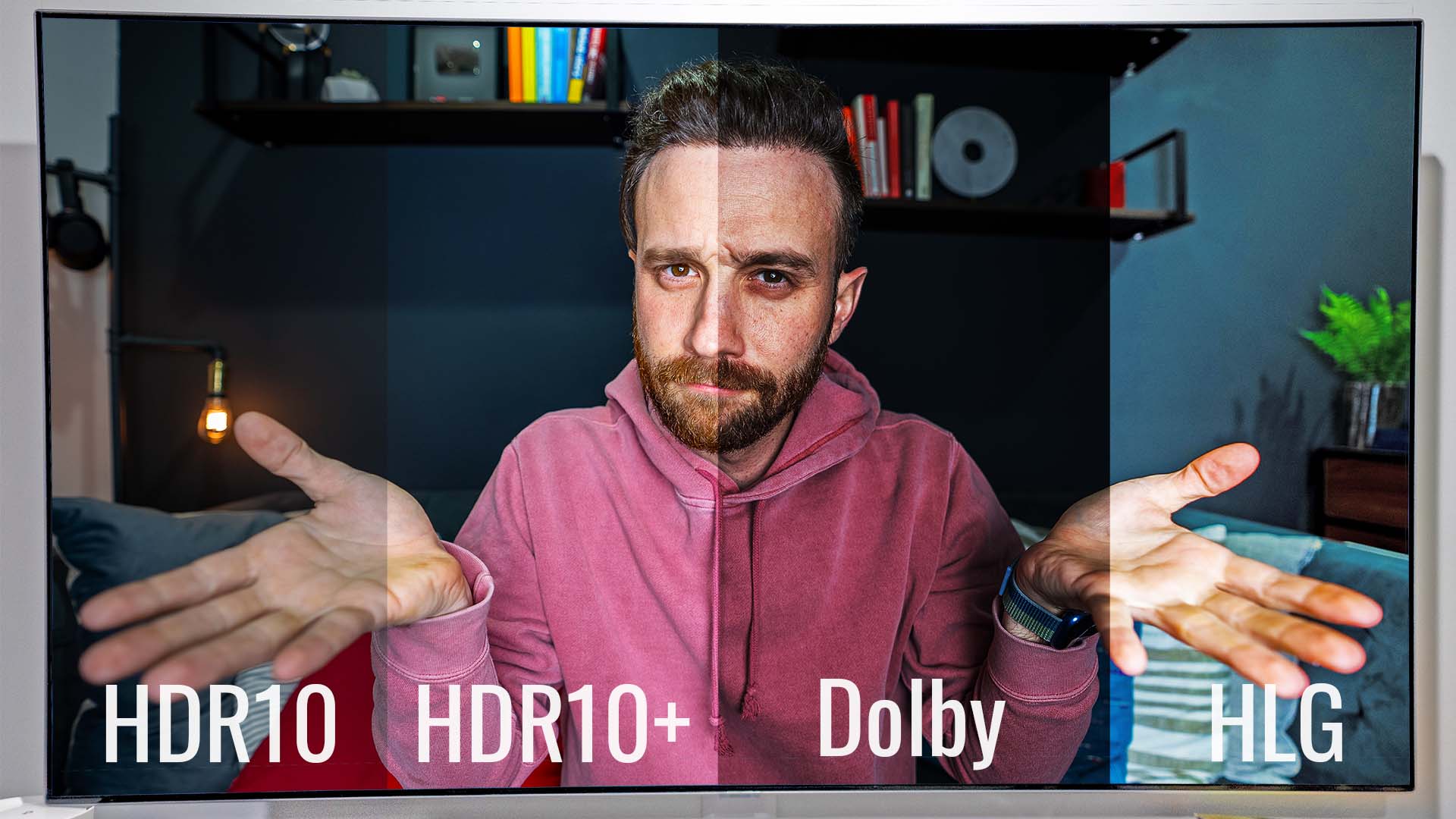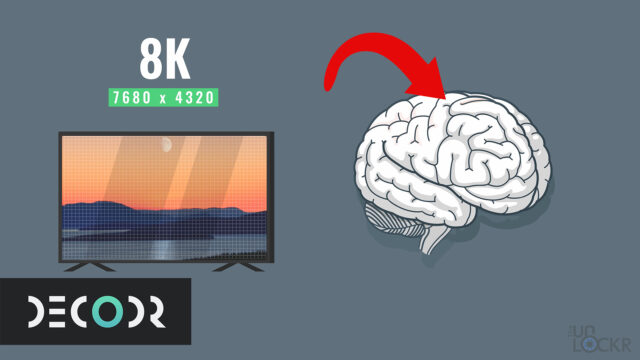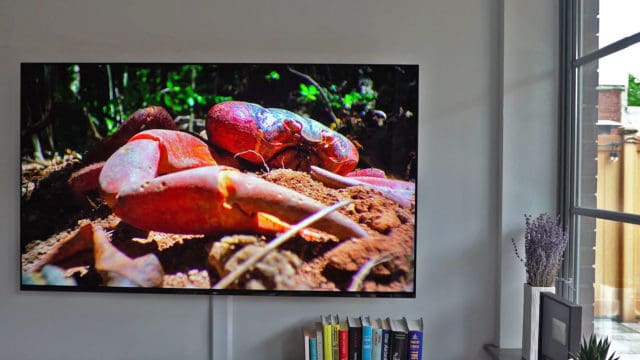How to Mount a TV (The Easiest Way Possible) (Video)
We’ve all been there. New apt, new house, new TV maybe? The living room is all set, maybe that TV is even on a stand on a media console, but you can’t help but feel like it’d just make the room look so much better if that TV was on the wall.
TV’s aren’t light really, they’re expensive, and so they’re a bit daunting to think about attaching with some bits of metal to the wall. On top of that, what mount do you use? How much do they cost? Why are some of them so freaking expensive (are you kidding me??). Thing is, it really doesn’t have to be that hard or that expensive.
Allied Content: This Video was Sponsored by Echogear (but it is something I thought was interesting to talk about or I wouldn’t have done the video 🙂 Hope you enjoy it!)
I just moved to a new apt in Brooklyn, bought a new TV, and started looking up mounts.
How to Find the Right TV Mount
I stumbled upon Echogear on Amazon and seeing the price and the crazy amount of 5-star ratings I decided to look into it.
Turns out they have a Mount Finder on their site which meant I didn’t have to guess, I just put in my TV and it told me the options I had. Then you just decide, as with most mounts out there, which type of mount: fixed for a slimmer look; tilt that allows you to tilt it up or down generally; and full-motion that allows you to tilt side to side, up and down, rotate it, etc.
Once you know the mount for your TV, you need to first determine what type of wall you have. The three most popular options are drywall with wooden studs, drywall with metal studs, and concrete or brick. The procedure is basically the same regardless with differences in what you’ll need.
Click here for the mount I bought.
Things You’ll Need
Things you’ll need no matter what:
- Level
- Tape Measure
- Drill
- Screwdriver
- Wrench (if the mount has bolts instead of screws)
And then if you have studded walls you’ll need a stud finder otherwise if it’s concrete or brick you’ll need just a concrete bit and don’t need the stud finder since you can put it basically anywhere on the wall.
For wooden studs, the most popular situation, the mount will usually come with the screws/bolts needed so that’s all set, and if you have metal studs (like I do and some newer buildings) you’ll just also need some toggle bolts. These go into the metal stud and then lock behind it to distribute the weight better since metal studs are usually quite thin.
Where on the Wall to Put the TV
Firstly, figure out the height and centering on the wall.
The Height
There’s a ton of sites telling you a ton of weird inch numbers in my opinion: one says 40 inches and another says 6 feet, etc. But frankly, I think the best place for the TV is simply eye level, and maybe slightly above that, from wherever you plan to watch it from. That means if it’s from the couch, measure up to your eye level while sitting up straight on the couch and that’s where the center of the TV should go (again maybe just a few inches higher to make it slightly more symmetrical vertically on the wall. So long as this is in a few inches of your eye level, you won’t have to tilt your neck up or down while watching, which gets really painful and is the main thing we want to avoid here. Think of it like the front row at the movie theater–you don’t want that.
Centered on the Wall
Once you have the height figured out, the general rule pretty much across the board for horizontally is to try and just get it centered on the wall. This might be a little different depending on your living room or wherever you’re putting the TV, but for the most part should be fine and frankly looks the cleanest in my opinion. To do that, just measure the length of the wall and divide that number by two. Then, using a pencil or something you don’t mind drawing on the wall with, put a small dot at that point at the height of a few inches above your eye level and that’s where our TV needs to be centered on.
Finding the Studs
Now, we can find the studs. You simply drag the stud finder slowly along the wall until it lets you know there is a stud, then continue to find another and another to confirm that it’s accurate. Depending on the TV and bracket size you may only need to drill into one stud, but most I’ve found need two. So we’ll find the two that are closest to our centered dot and mark where those are. One thing we need to avoid however is electrical wires, for obvious reasons.
Don’t Get Electrocuted
In most modern places these metal conduits run horizontally about 2 feet from the floor (to minimize the drilling that might happen to them) but sometimes you’ll find vertical ones and the stud finder might just think it’s a just a wooden stud. Thankfully, most stud finders have an AC indicator that will light up if it senses an electrical current in the stud. If that happens, you’ll have to find a different stud, unfortunately. You can also generally, but not always, find them by just looking at light switches and power outlets as if they are running vertically, they’ll be running along those. Some people recommend using a combination of all of these things and poking into the wall gently with a monkey hook or similar item to literally just feel inside the wall to find what’s in there. Regardless, just be careful of these things as they can be dangerous if ignored for obvious reasons.
Attaching the Mount
Once you figure out the studs and that there are no electrical wires in the way, we’re going to focus on the TV for a sec.
Attaching the Mount to the TV
Most mounts come in two parts, a TV bracket and a wall bracket that just makes the entire process make way more sense than if they didn’t. First, we attach the TV brackets to the back of the TV while it’s laying face down on something soft (I used my rug, we don’t want to scratch the front of the TV, of course). The TV and the TV brackets will line up their holes since we used a tool to help us determine the mount we needed, of course, using the screws it came with and making sure to center the brackets on the back of the TV.
Attaching the Mount to the Wall
Next, we can focus on the wall. The Echogear mount came with rather cheeky a drilling template which makes life a lot easier. If your mount didn’t come with that you’ll have to simply hold up the actual mount against the wall to find where to drill (and I recommend having someone else help you if that’s the case to just help hold it on the wall). Regardless though, the idea is we need to line up 4 of the holes on the bracket (two on either side in this case) onto the studs we found with the center centered where we marked the center of our TV to go. You’ll then mark these holes using that same pencil or whatever you used before and we can put the drilling template/bracket aside.
Now, the fun part. We take our drill using the drill bit for our screw size and drill our four holes into the two studs for this particular mount.
Once we have our four holes we can put our mounting bracket over them and put in the lag screws in this case, into the wall using a wrench (you might just have screws you can drill in which you can use the drill for instead).
Hanging the TV
Once that is snug to the wall we can take the TV (two people recommended) to then hang the TV onto the bracket where it’ll slide on. Once that’s locked in place, you’re done.
There you go, the easiest way to mount a TV. This should work for most TVs and mounts by the way, but I really do recommend the Echogear mount if you want to check that out (how can those many 5-star ratings and that price be wrong?). Feel free to check them out here on Amazon if interested.
Otherwise, as always, thanks for reading!
This is a sponsored conversation written by me on behalf of ECHOGEAR. The opinions and text are all mine.





















